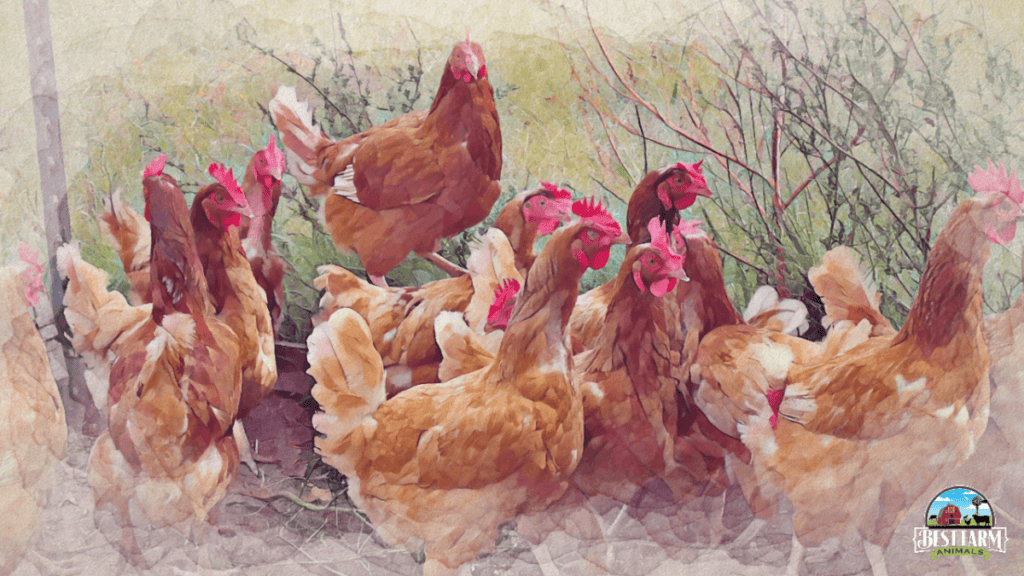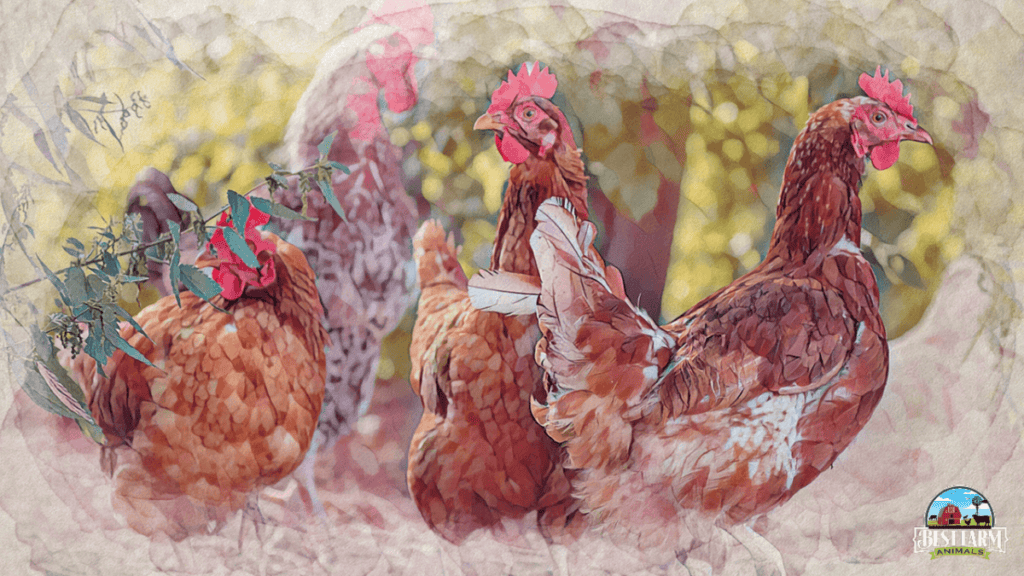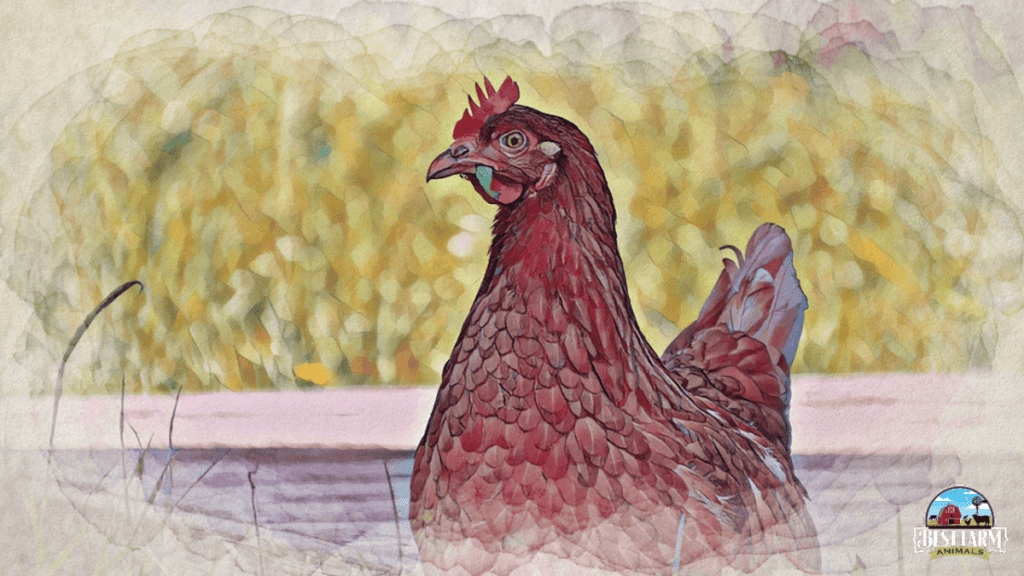The Empordanesa chicken is renowned for its remarkable egg-laying abilities, consistently producing a rich, deep brown egg. These chickens lay one of the darkest chicken eggs in the world, making them highly sought after.
- Empordanesa Chicken: Elegant Deep Brown Eggs
- Empordansesa Chicken FAQs
- Are Empordanesa and Penedesenca chickens the same breed?
- How many eggs do Empordanesa and Penedesenca chickens lay?
- Do Empordanesa and Penedesenca eggs lighten in color over time?
- Can Empordanesa and Penedesenca chickens tolerate cold climates?
- Are Empordanesa and Penedesenca chickens suitable for backyard flocks?
- What is the historical significance of these breeds?
- Can Empordanesa and Penedesenca chickens be kept together?
- Can Empordanesa and Penedesenca chickens be raised for meat as well?
- Do poultry associations recognize Empordanesa and Penedesenca chickens?
- Can I find Empordanesa and Penedesenca chickens outside of Spain?
With an average of approximately 3 extra-large eggs per week, or around 130-180 eggs per year, Empordanesa hens are reliable and productive layers. They are one of the five chicken breeds that lay dark brown eggs.
Their egg color may lighten as the laying season progresses. Their eggs’ initial vivid brown hue is a popular and desirable trait, often commanding a higher premium in the market. Empordanesa chickens stand out for consistently producing dark, visually striking eggs.
Empordanesa Chicken: Elegant Deep Brown Eggs
Empordanesa are yellow and red Spanish-bred chickens with beautiful, dark brown eggs. These chickens lay a rich, deep brown egg. They lay one of the darkest chicken eggs in the world with only the Penedesenca or Barnevelder chickens even competing with eggs as dark.
The greatest reason to own an Empordanesa hen is the amazing eggs! Hens will lay about 3 extra-large eggs a week, or 130-180 eggs a year. They slow down in the winter. This break allows them to darken their eggs again as they become a deep color in the spring.
The Empordanesa eggs will lighten as the laying season progresses. Dark brown eggs are popular in the market and sell for a higher premium in many places.
My Empordansea hen is a moderate egg layer who gives me about 3 eggs a week. Take a trip to Spain, just by enjoying your very own Empordanesa chicken.
This old breed has been around for a long time, cultivated among local Catalina farmers, but the first mention of it was in 1921. Professor M Rossell I Vila called it a patriotic duty to save the local Penedes chickens.
His publicity helped. The breed started to revive until the Spanish Civil War and World War I nearly wiped it out again.
In 1981, a Spanish Government program worked with local farmers to revive the breed from the few remaining birds left. They were first imported to the U.S. in 2001. Only white Empordanesa chickens have been imported to the U.S.
There are three Catalina chicken breeds: the Empordanesa, the Penedesenca chickens, and the Prat Lleonada, which lays pink eggs.

Physical Characteristics Of Empordanesa Chickens
Empordanesa and Penedesencas are related, but there are distinct differences. Some people believe that a black-colored Empordanesa is just called a Penedesenca, but that isn’t true.
In reality, there are more differences between these close cousins.
Empordanesa chickens have red ear lobes, instead of the white ones of their cousins. They have a carnation comb, name from the carnation flower-like comb on the head. It is also called a crown or Clavell comb. It starts as a single comb and as it moves toward the back of the head, several loves spread out to make it look like a crown.
They have bright yellow legs.
Empordanesas come in several colors including the red, white and buff varieties.
Empordanesa breed was accepted into the Spanish Standard in the mid-1900s. They are a heritage chicken to Spain.

Reasons To Raise Empordanesa Chickens
Empordanesa roosters grow to 5-6 lbs (2-3 kgs), and hens grow to 4-5 lbs (1.7-2.3 kgs). Meanwhile, hens are a little forgetful and rarely get broody. If you want to raise Empordanesa chickens, you will need an incubator.
Caring For Your Empordanesa Chickens
Empordanesa chickens fly very well. They love a lot of space and won’t do very well in small spaces.
They should be allowed to free-range. They are excelled foragers and will be very cost-efficient because they need very little supplemental feed during the warm months.
They are very hardy birds and do extremely well in hot temperatures. They need more care in the winter and cold winter because their wattles are large and subject to frostbite.
Empordanesas are at a lower risk of predator capture than other chicken breeds. They do a great job of taking care of themselves and escaping danger.
Empordanesa chickens are active, eager and busy chickens. They like to chatter so they aren’t a great bird for small backyards and close neighbors.
They also like to avoid people. They will get a little friendly, but will never be very bonded to their owners.
They are especially rare in the United States.
| Climate | Personality | Use | Size | Eggs/ Yr | Brooder | Forages |
| Hot | Standoff | Eggs | M: 6.5
F: 5 | Varies
160-180 | Rarely | Excellent |
- Self-sufficient foragers
- Rich, dark brown eggs
- Extra large eggs

Empordansesa Chicken FAQs
Are Empordanesa and Penedesenca chickens the same breed?
Empordanesa and Penedesenca chickens are two distinct breeds. Empordanesa chickens are known for their yellow and red coloration and dark brown eggs, while Penedesenca chickens have a solid black plumage and lay dark brown or chocolate-colored eggs.
How many eggs do Empordanesa and Penedesenca chickens lay?
Empordanesa hens typically lay around 3 extra-large eggs per week or 130-180 eggs per year. Penedesenca hens have a similar egg-laying pattern, producing around 3-4 eggs per week or approximately 150-200 eggs per year.
Do Empordanesa and Penedesenca eggs lighten in color over time?
Both Empordanesa and Penedesenca eggs can lighten in color as the laying season progresses. However, they still retain a distinct dark brown hue, which is highly valued in the market.
Can Empordanesa and Penedesenca chickens tolerate cold climates?
Both breeds are relatively hardy and can tolerate colder climates. However, it’s important to provide adequate shelter and protection from extreme cold weather to ensure the well-being of the chickens.
Are Empordanesa and Penedesenca chickens suitable for backyard flocks?
Both Empordanesa and Penedesenca chickens can be well-suited for backyard flocks. They are known for their moderate egg-laying rates and can be a beautiful addition to any flock, providing eggs and visual appeal with their unique plumage.
What is the historical significance of these breeds?
Empordanesa and Penedesenca chickens have a rich history in Spain. Empordanesa chickens were cultivated among local Catalina farmers and have been mentioned as far back as 1921. Penedesenca chickens, on the other hand, have a long-standing presence in the Penedes region of Catalonia. Both breeds have faced near extinction but were revived through dedicated efforts to preserve their heritage.
Can Empordanesa and Penedesenca chickens be kept together?
While Empordanesa and Penedesenca chickens can be kept together, it’s important to consider their individual needs and temperaments. Ensuring adequate space, proper nutrition, and compatible social dynamics among the flock will contribute to a harmonious coexistence.
Can Empordanesa and Penedesenca chickens be raised for meat as well?
While both breeds are primarily known for their egg-laying abilities, they can also be raised for meat. However, it’s important to note that their smaller size and slower growth rate make them more suitable for egg production than meat production than other meat-specific chicken breeds.
Do poultry associations recognize Empordanesa and Penedesenca chickens?
Yes, both Empordanesa and Penedesenca chickens are recognized and registered by various poultry associations in Spain and other countries. These associations play a crucial role in preserving and promoting these heritage breeds.
Can I find Empordanesa and Penedesenca chickens outside of Spain?
Yes, these breeds have gained some international recognition and can be found in select regions outside of Spain. However, availability may vary, and it’s recommended to consult local breeders or poultry associations to inquire about the availability of Empordanesa and Penedesenca chickens in your area.
My Favorite Chicken and Duck Supplies
This list contains affiliate products. Affiliate products do not cost more but helps to support BestFarmAnimals and our goal to provide farm animal owners with accurate and helpful information.
Manna Pro Oyster Shell keeps eggs strong. Before I gave my chickens oyster shell, I had the oddest eggs, many with weak and irregular shells. Now, I don’t have an issue.
Layer Feed by Manna Pro. I like pellets rather than crumbles as my chickens eat them better and less gets wasted or scavenged by rodents. A good layer feed makes the difference in hens laying many more eggs.
My chickens love this mealworm treat, which gives added protein, something that’s great during molting and winter months.
There are many ways to feed and water your chickens. I like this food and water setup the best because it reduces waste, saves me time feeding and watering, and keeps the food fresh longer. Except, in the winter, I use a heated waterer. The only problem is the heated waterers need to be replaced every few years.
I love this chicken veggie hanger. It makes it easy to give your chickens produce from the garden and keep them occupied in the winter with a fresh head of lettuce.
These chicken toys are a hoot! They will help curb bullying and keep your chickens active, especially in the winter when hens tend to get more lethargic.

